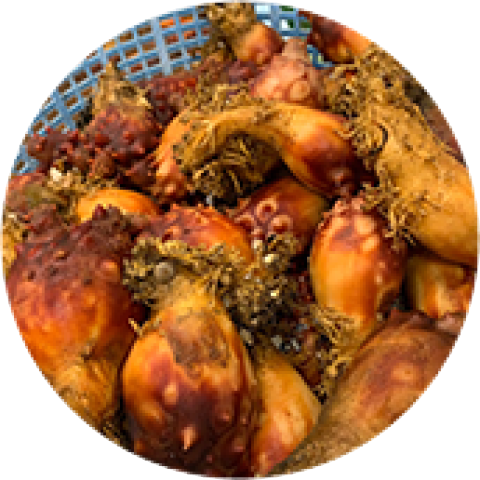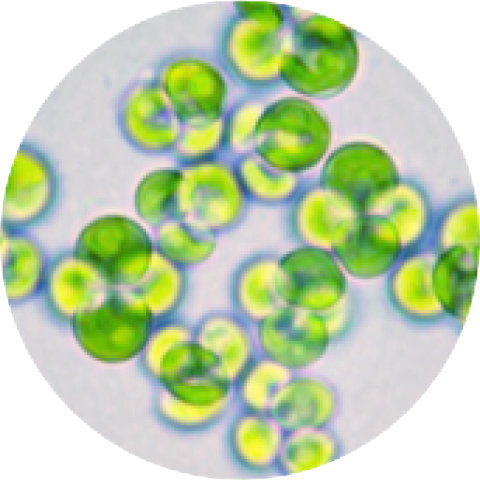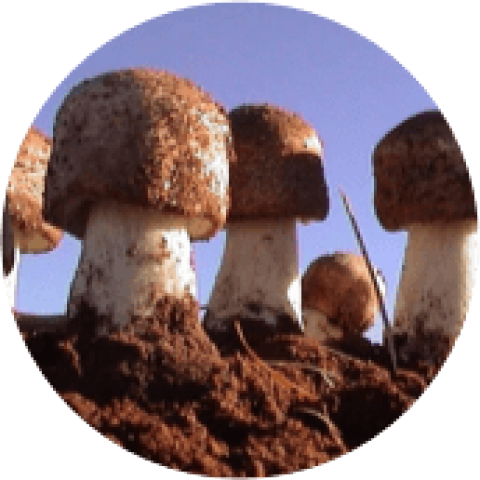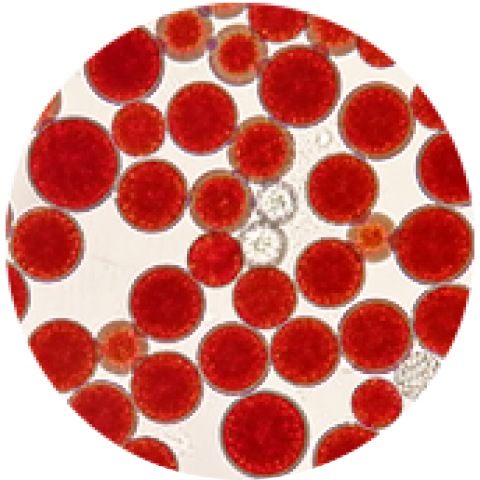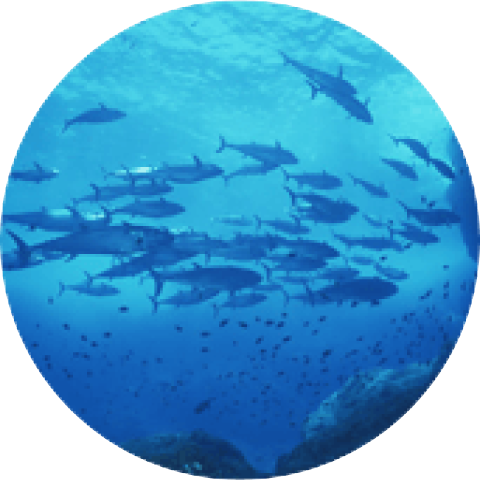Plasmalogen, a remarkable component of ascidians, called sea pineapple.
Plasmalogen, a naturally-occuring compound derived from ascidians, (often known as sea pineapple). It’s also a glycerophospholipid lipid found in the brain, heart, and muscles.
Discovered in 1924. plasmalogen earned its name due to its ability to produce aldehydes, a type of fatty acid, when the cytoplasm (plasma) is treated with acid.
In the human body,plasmalogen levels increase gradually until about age 40, but reportedly decrease significantly at about age 70, dropping to nearly 40% of that of younger people.
This life-essential compound is found in chicken thighs, scallops, and ascidians, and there are many kinds of them. Of particular, ethanolamine-type plasmalogen, which contains DHA (docosahexaenoic acid) in their structure and is abundant in the human brain and other nervous tissues.
Ascidians contain more of this ethanolamine-type plasmalogen than chicken thighs or scallops, and ascidians themselves are known to be like humans in tracing the phylogenetic evolution of their neural tissue.
Sun Chlorella sources ascidians cultivated in Hokkaido and processes them into a highly stable, freeze-dried powder, to ensure high-quality products.
Health Benefits of Plasmalogen Supplements
Plasmalogen was discovered by accident—a happy accident at that. To date, it has been widely used for helping with:• Improving cell membrane: Clinical trials show that plasmalogen-rich cell membranes have better integrity.
• Defending against oxidation: Plasmalogen makes for good antioxidant supplements because it can help free cells from oxidative stress.
• Boosting cognition: Plasmalogen is largely present in the brain, so it’s often considered a memory supplement, and some research indicates that it may prevent neurodegenerative diseases.
• Reducing inflammation: One study showed that balancing plasmalogen could lower the body’s response to inflammation.
Plasmalogen is more than a brain supplement; it can also boost your overall health. Sun Chlorella sources premium natural ingredients and uses advanced manufacturing processes to ensure optimum nutritional value.
